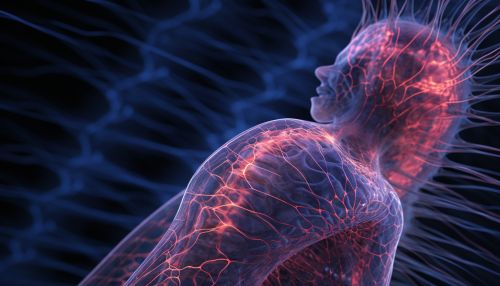Sympathetic nervous system
Overview
The sympathetic nervous system (SNS) is a component of the autonomic nervous system (ANS), which regulates the body's unconscious actions. The SNS is responsible for the body's 'fight or flight' response, preparing the body for action during times of stress or danger.


Anatomy
The SNS is primarily composed of neurons that originate in the spinal cord, specifically the thoracic and lumbar regions. These neurons connect to various organs and muscles throughout the body, allowing the SNS to exert control over a wide range of bodily functions.
Function
The primary function of the SNS is to stimulate the body's 'fight or flight' response. This involves a range of physiological changes, including increased heart rate, blood pressure, and metabolic rate, as well as dilation of the pupils and bronchial tubes. These changes prepare the body for action, either to confront a threat or to flee from it.
Neurotransmitters
The SNS primarily uses the neurotransmitters norepinephrine and epinephrine to transmit signals. These neurotransmitters bind to adrenergic receptors on the target cells, triggering the physiological changes associated with the 'fight or flight' response.
Pathology
Disorders of the SNS can lead to a range of health problems, including hypertension, heart disease, and anxiety disorders. These conditions can often be managed with medications that target the SNS, such as beta blockers and alpha blockers.
